Power Hungry
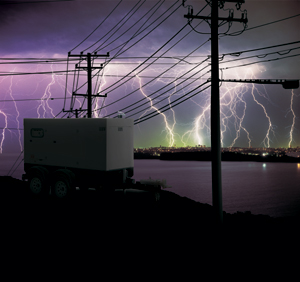 Few applications have a wider range of available horsepower options than generator sets. These units can run anywhere from 1 to 10,000 hp and beyond, but the typical contractor or hobby farmer, for example, is more likely to use a generator in the 20- to 150-hp range.
Few applications have a wider range of available horsepower options than generator sets. These units can run anywhere from 1 to 10,000 hp and beyond, but the typical contractor or hobby farmer, for example, is more likely to use a generator in the 20- to 150-hp range.
Gen sets have always been a fairly simple application for engines. Some important application requirements for other equipment — torque, power bulge and fuel economy — aren’t as critical when working with gen sets. What’s most important is that the engine is durable, reliable, cost-effective, quiet and emissions-compliant. For most gen set users, high-performance characteristics are a bonus.
“Today’s Tier 3 engines are much more technologically advanced than their Tier 1 and Tier 2 counterparts,” says Matt Arnold, product planner at John Deere Power Systems, which manufactures generator-drive engines from 36 to 617 hp. “Some Tier 3 engine models have technology such as cooled exhaust gas recirculation [EGR] and variable geometry turbochargers [VGT], but in the cost-driven gen set market, many customers are looking for emissions-compliant engines that aren’t as full-featured.”
Because the EPA took a phased approach to emissions compliance, the Tier 3 deadline for some horsepower ranges of engines just came into effect in January 2008. Here is a quick breakdown of when off-highway engines common to compact equipment users have to meet EPA regulations. Engines of:
- 24 hp and below entered Tier 2 in 2005 and skipped Tier 3, going right to Final Tier 4 in 2008.
- 25 to 99 hp entered Tier 2 in 2004 — in 2008, the lower end of this
range jumped to Interim Tier 4 and the higher end of this range had to
meet Tier 3. - 100 to 174 hp entered Tier 2 in 2003 and Tier 3 in 2007.
For low-horsepower Tier 3 engines, mechanical models are still available. Some manufacturers offer an Interim Tier 4 engine in 43 hp for prime power applications and 48 hp for standby power applications. These engines feature mechanical controls, a two-valve cylinder head, a fixed geometry turbocharger and a mechanical rotary pump fuel system.
Tier 3 engines with electronic controls are available in mid-range horsepower options. These engines feature either two-valve or four-valve cylinder heads depending on model, electronic unit pump or high-pressure common-rail fuel systems, full-authority electronic controls, a multiple injection strategy and a fixed geometry turbocharger.
High-technology options are more common in the higher horsepower engines than in the type of gen sets contractors and other users of compact equipment are likely to own. These engines feature a four-valve cylinder head, full-authority electronic controls, variable geometry turbochargers and cooled exhaust gas recirculation.
Common gen set applications for contractors include temporary jobsite power supply for lighting and tool usage. Standby gen sets are usually stationary units meant to serve as backup when the power goes out. Having a backup power supply is much more crucial for some people than for others. Animal farmers are one example of gen set users who rely heavily on reliable standby power.
Todd Honkomp is a production supervisor with Pro Pork Associates, an Iowa hog management farm. They have a gen set powered by a John Deere 4.5L diesel engine. “We need the standby generator in case of a power outage,” Honkomp says. “An hour without ventilation or heat for our baby pigs and we could have animal losses.”
Pro Pork Associates is not content to let the generator sit idle waiting for an emergency outage; the local rural electric cooperative taps into the generator to fill peak demand.
“They have a switch they can throw that starts up the generator and sends power out onto their lines,” Honkomp explains. “In return, we get about a 30 percent discount on our utility bill every month.”
Having a reliable generator is always important, but it became especially important to Pro Pork Producers when its utility company began to count on them. If the utility hits that switch and the generator’s engine doesn’t start, Pork Pro Associates loses their discount for that month.
“We quickly saw the importance for having that engine properly maintained,” Honkomp says. “We sure don’t want to lose that discount. That’s why I worked with Greenway [the local John Deere dealership] to keep the engine and generator ready to run.”
Honkomp’s gen set runs about 350 hours a year and has never broken down. The engine’s reliability is what’s most important to Honkomp, as is the case with most gen set customers.
Jennifer Oredson is a technical writer with Two Rivers Marketing, Des Moines, Iowa.
Yanmar Diesel
TNV and MINIMAX Series Diesels from the Japanese Compact Engine Innovator
Yanmar introduced its new TNV Series of compact diesel engines in 2003. The lineup includes 10 TNV models stepped from 13.8 to 85.6 gross hp. The Yanmar model 3TNV82A exemplifies one of its most popular engines. It is rated at 24.7 hp at 2,500 rpm as utilized in the 6,306-lbs (operating weight) Yanmar Vi027 mini excavator.
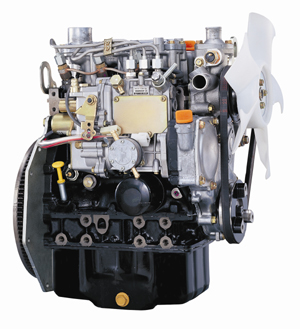
Improvements to the combustion and FIE systems result in cleaner combustion through refined air intake design. A newly developed inline fuel injection pump provides the same level of FIE performance as found in Yanmar’s direct-injection engine models. A load timer adjusts injection timing in accordance with engine load. A fuel damping valve built into the delivery portion of the fuel pump stabilizes the pressure remaining after injection and prevents any secondary injection of fuel.
Yanmar has also just introduced the MINIMAX Series diesel engine solution for lawn and garden equipment, small agricultural machines, utility vehicles and compact generators. Model number 3TNM68 is the first in this series released. This 784-cc, three-cylinder Tier 4 compliant engine employs Yanmar’s proprietary indirect injection technology to achieve low fuel consumption and emissions levels. The engine block for this ultra compact and high-performance power plant employs Yanmar’s latest structural technology to achieve low vibration, noise and size.
The MINIMAX incorporates Yanmar’s new proprietary MC type injection pump to achieve precise fuel delivery, reduced fuel consumption and low emissions. This engine is already compliant with EPA Tier 4 regulation.
Where Can You Find Them?
Yanmar compact engines power machines such as mini excavators, wheel loaders, skid steers, track loaders and more. TNV Series compact diesel engines help power machines from over 175 OEMs alone. Popular compact construction equipment that utilizes Yanmar diesel engines includes Volvo, Mustang, Komatsu, Hyundai, Gehl, Daewoo, John Deere and Takeuchi, as well as Bomag and Mikasa.
Perkins Engines
The 400 Series is a Driving Force in Compact Power Plants
Ranging from 5 to over 2,600 hp, Perkins power plants command over 5,000 differentapplications from over 1,000 major equipment manufacturers. Perkins Engines main compact line of engines is the 400 Series, which continues to be popular with OEMs worldwide.
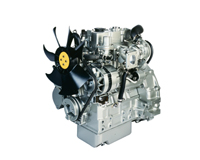
Where Can You Find Them?
With demand for compact machinery growing, especially in the construction market, an increasing number of equipment manufacturers are adopting the 400 Series as their engine of choice. There are more than 200 different applications in the agriculture, construction and material handling sectors among others, using the engine to provide power and reliability. Perkins engines are used to power machines in the construction, industrial, marine, materials handling, power generation and the Ag industries.
Honda Engines
The World’s Biggest Manufacturer of Outdoor Power Equipment Engines
All Honda Power Equipment models are designed to be environmentally responsible and technologically advanced and are powered exclusively with Honda four-stroke engine technology for high fuel efficiency and low emissions. Honda’s four-stroke technology aims to reduce operator fatigue related to engine noise and vibration. Honda also designs and produces environmentally advanced four-stroke engines for use by other original equipment manufacturers. These models are promoted as quieter, more fuel efficient and easier to start than comparable two-stroke engines, say company officials.
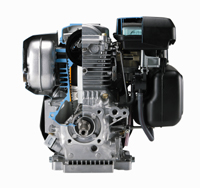
Where Can You Find Them?
Honda engines produces 37 models with more than 400 variations that supply reliable power for applications from pressure washers and hobbyist applications to commercial mowers, lawn tractors and generators. Karcher, Coleman and Black & Decker are just a few OEMs that rely on Honda engines.
John Deere Power Systems
Off-Highway Diesel Engines that Balance a Compact Size with Heavy-Duty Power
Currently, the John Deere Tier 3 PowerTech M and PowerTech E 4.5L engines are the latest in its less than 99-hp engine lineup. The PowerTech M 4.5L is turbocharged or air-to-air after cooled and has a power range of 75 to 99 hp. PowerTech M 4.5L engines feature economy of design, a two-valve cylinder head, a fixed geometry turbocharger and a mechanical rotary pump fuel system, plus all the performance of Tier 2.

End-user benefits for PowerTech E 4.5L engines include such perks as improved performance over Tier 2 counterparts — up to 30 percent higher peak torque, more low-speed torque (up to 130 percent of rated speed torque) and up to a 6 percent power bulge (an increase in power as the engine goes down in speed to help get through tough spots). These engines also have transient-response time (the amount of time it takes the engine to get up to speed) that meets or exceeds Tier 2 counterparts. Full-authority electronic controls also enable the engines to offer improved cold-start performance, precise engine-speed control, torque-curve shaping, improved fuel economy and more. Electronics increase productivity, improve fuel economy, lower total installed costs and reduce ownership costs. Additional benefits include their compact size (the same as their Tier 2 counterparts), reduced noise and a 500-hour oil change.
Where Can You Find Them?
All of the above-mentioned engines fit in such compact equipment as compact track loaders, mini excavators, loader backhoes, crawler dozers, crawler loaders, wheel loaders, skid steers, small tractors, pavers, trenchers, gen sets, horizontal directional drills, lift trucks, concrete saws, telehandlers and more, depending on the size of the machine.



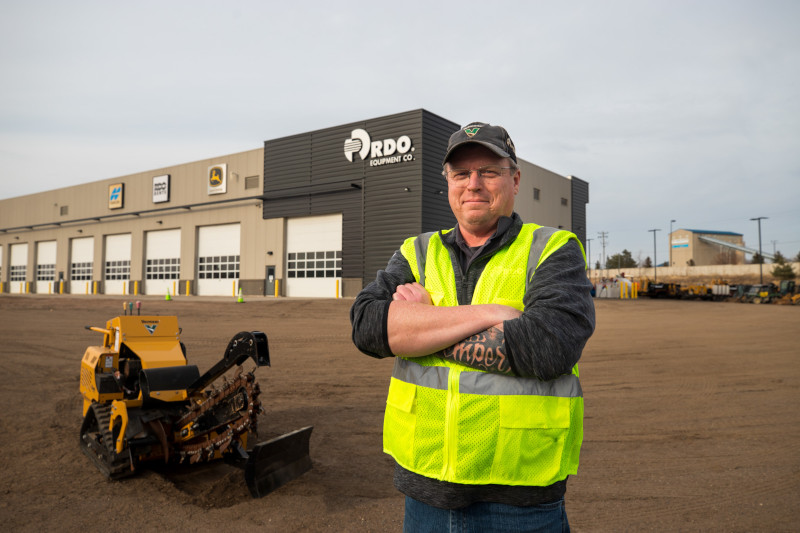

Comments are closed here.